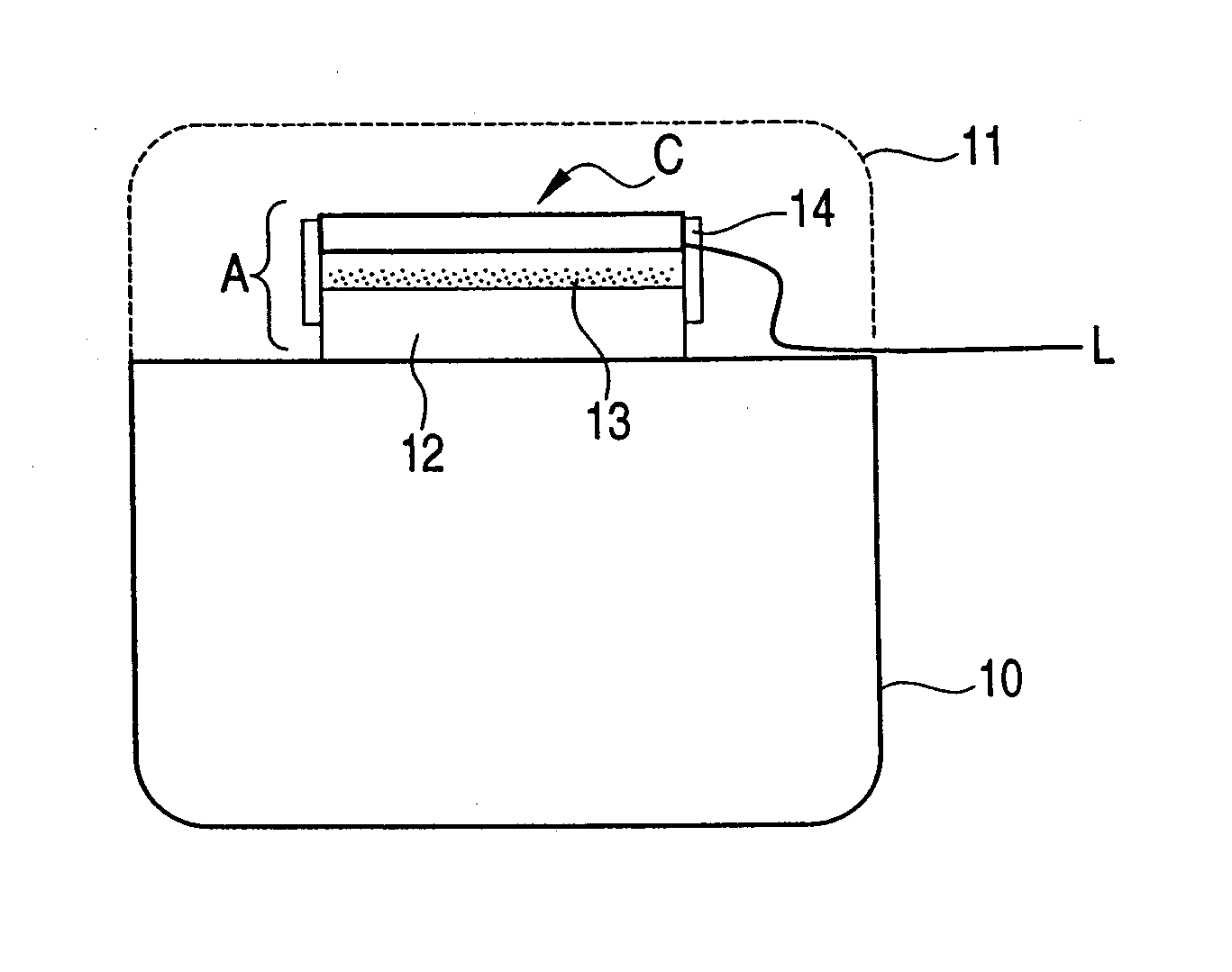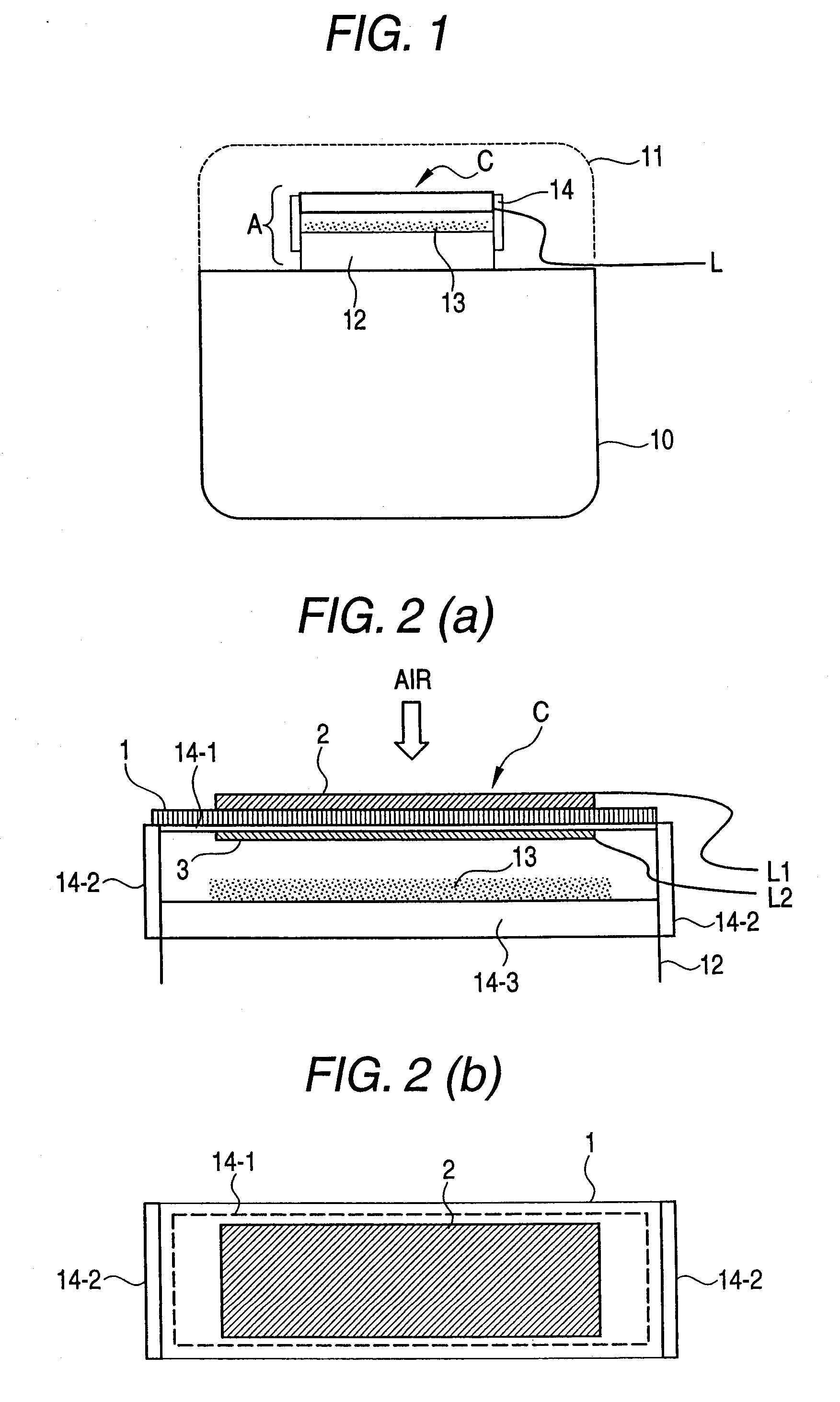Solid oxide fuel cell device
a fuel cell and solid oxide technology, applied in the direction of fuel cells, fuel cell grouping, solid electrolyte fuel cells, etc., can solve the problems of difficulty in enhancing the durability of the fuel cell, risk of explosion of mixed fuel gas, and inconvenient portability, so as to continue to generate electric power stably and convenient portability
- Summary
- Abstract
- Description
- Claims
- Application Information
AI Technical Summary
Benefits of technology
Problems solved by technology
Method used
Image
Examples
example
[0071]FIG. 1 illustrates an example of a direct-flame-type solid oxide fuel cell device which can supply fuel to a solid oxide fuel cell, and, in addition, which utilizes a catalytically-oxidizing member as a heat source for maintaining its operating temperature. The example illustrated in FIG. 1 utilizes a catalytically-oxidizing member provided in a platinum pocket warmer, which is a typical example of a heating appliance.
[0072] Generally, a portable-type platinum pocket warmer comprises a fuel storage container 10; an open fire recess A at an upper portion of the fuel storage container 10; a fuel supply port 12 through which fuel can be supplied from the fuel storage container 10; and a catalytically-oxidizing member 13 for catalyzing oxidation of the thus-supply fuel. The fuel supply port 12 and the catalytically-oxidizing member 13 are disposed in the open fire recess A. A protective cover 11 for covering the open fire recess A is attached after ignition of the fire, for ensur...
PUM
| Property | Measurement | Unit |
|---|---|---|
| thickness | aaaaa | aaaaa |
| operating temperature | aaaaa | aaaaa |
| temperatures | aaaaa | aaaaa |
Abstract
Description
Claims
Application Information
 Login to View More
Login to View More - R&D
- Intellectual Property
- Life Sciences
- Materials
- Tech Scout
- Unparalleled Data Quality
- Higher Quality Content
- 60% Fewer Hallucinations
Browse by: Latest US Patents, China's latest patents, Technical Efficacy Thesaurus, Application Domain, Technology Topic, Popular Technical Reports.
© 2025 PatSnap. All rights reserved.Legal|Privacy policy|Modern Slavery Act Transparency Statement|Sitemap|About US| Contact US: help@patsnap.com



